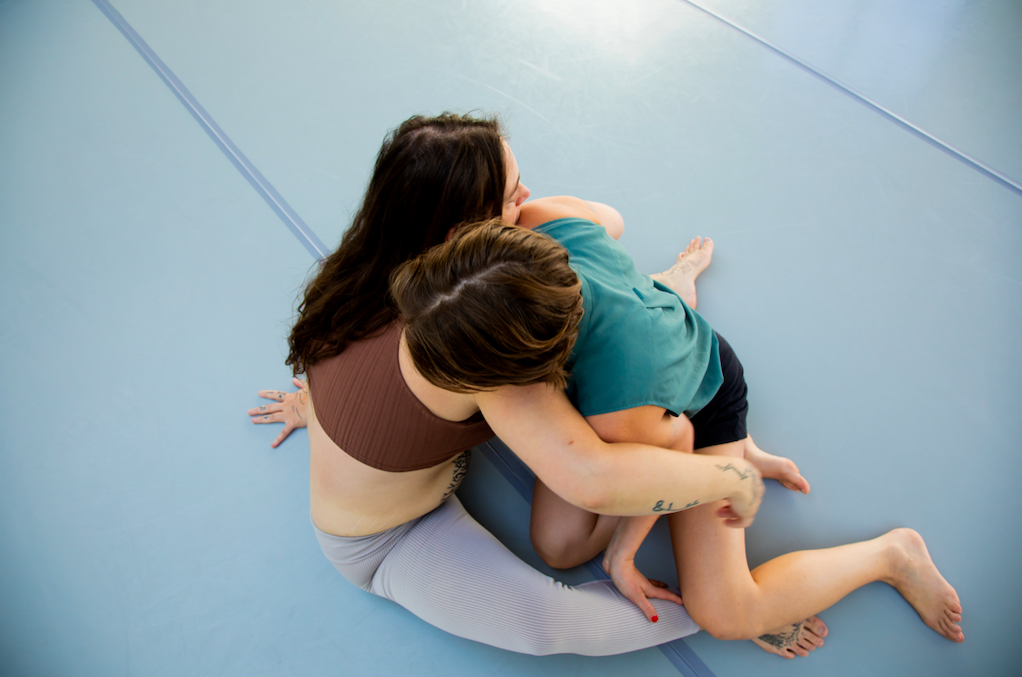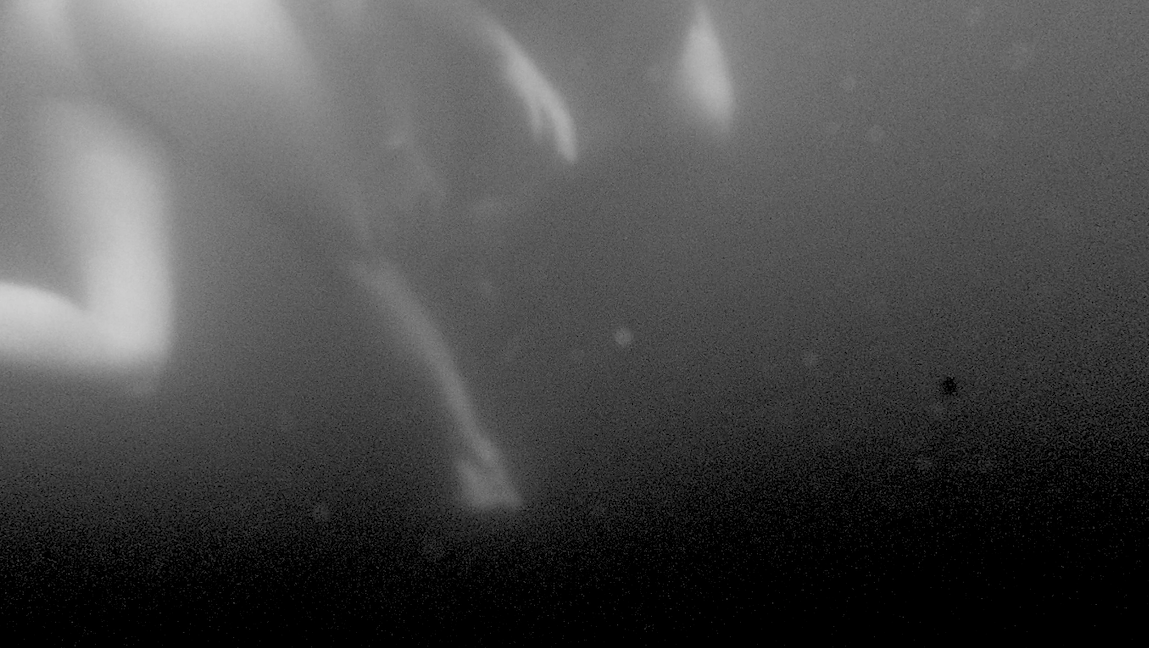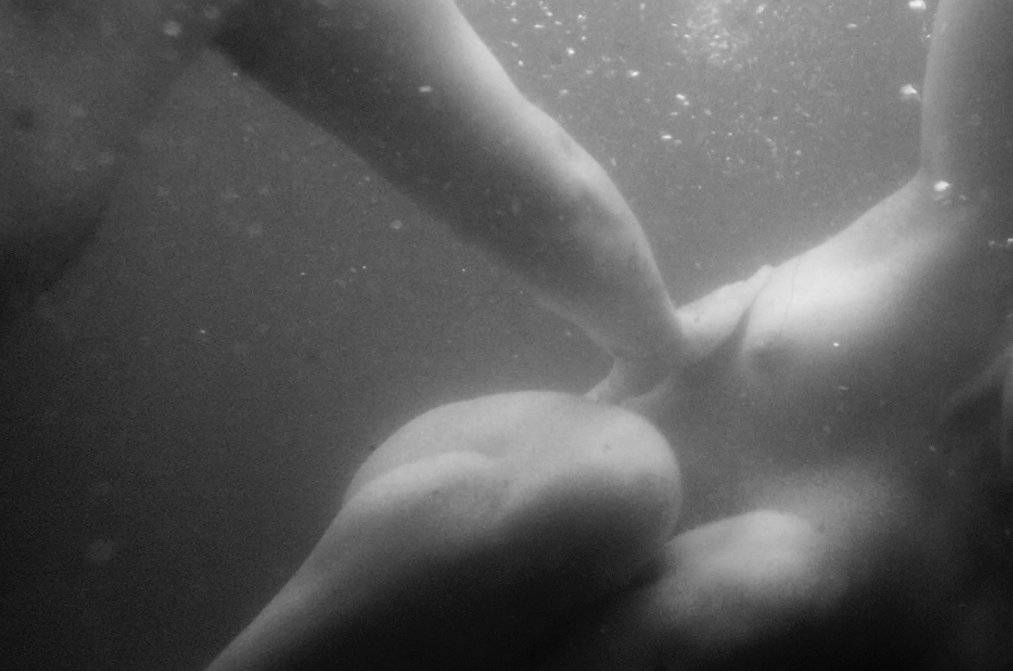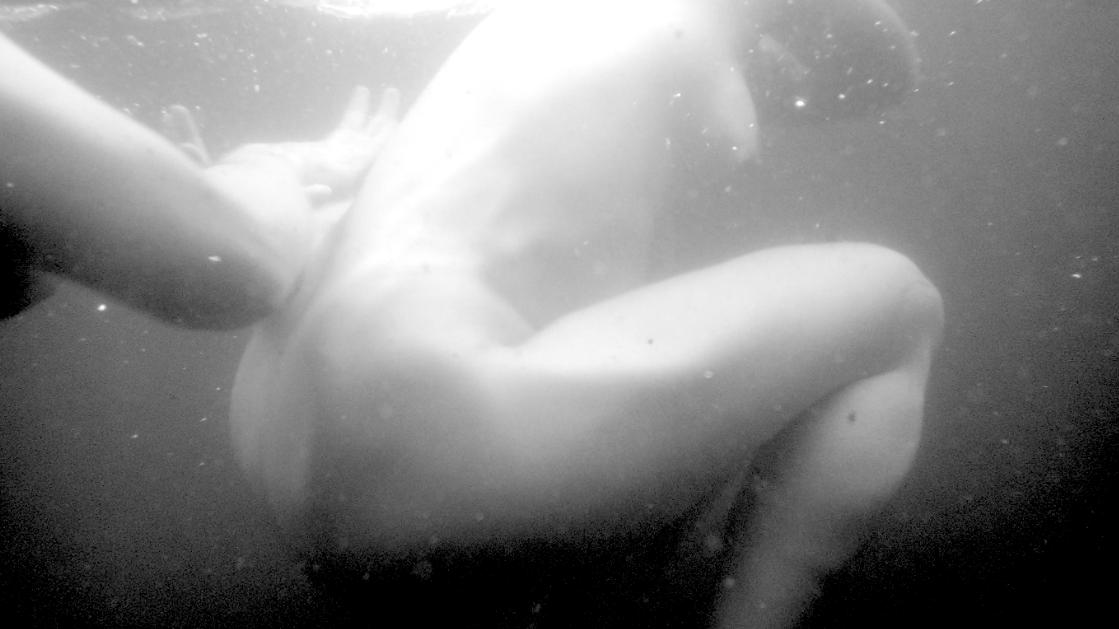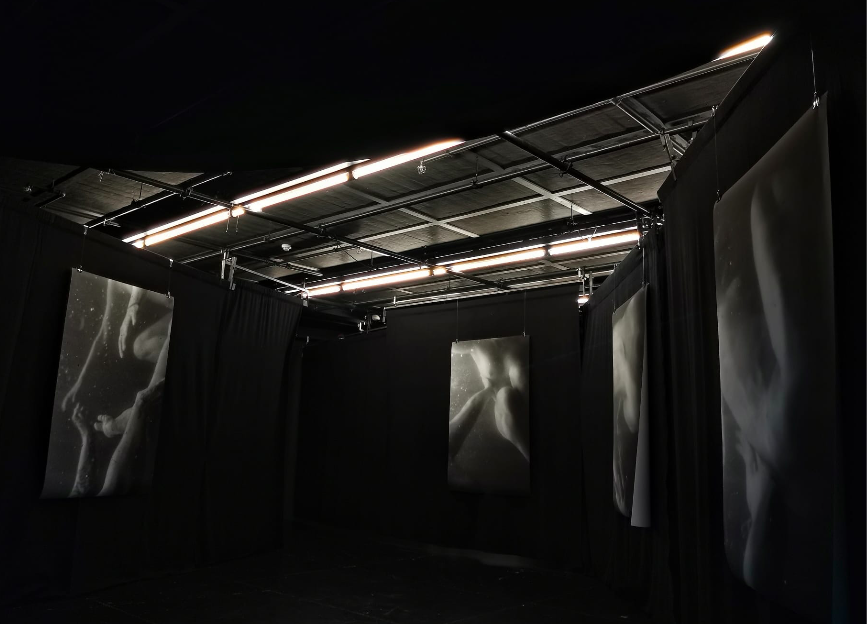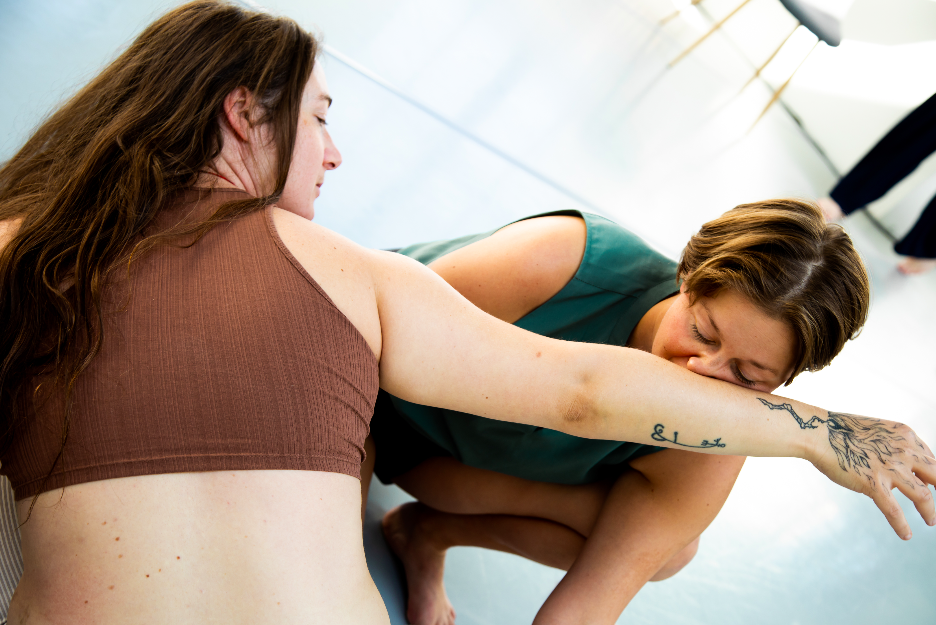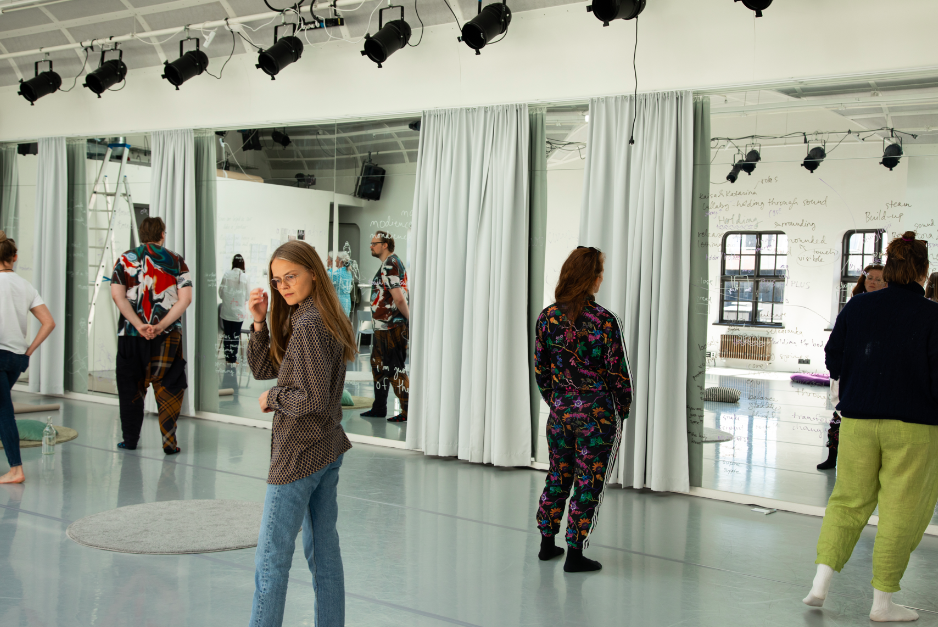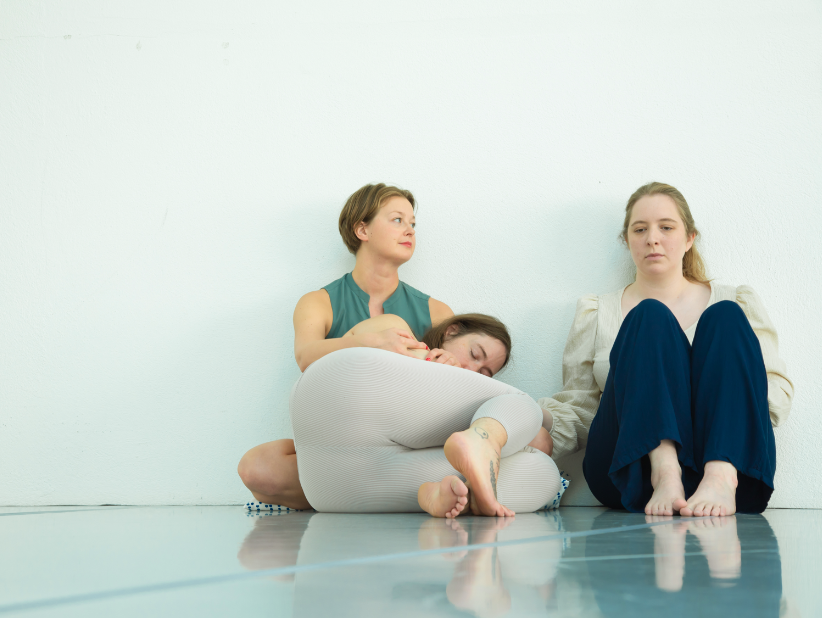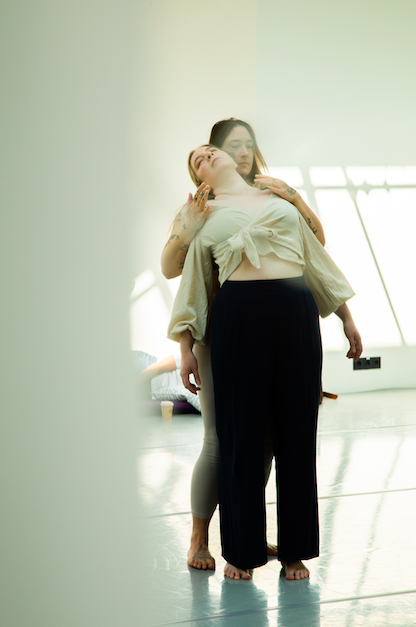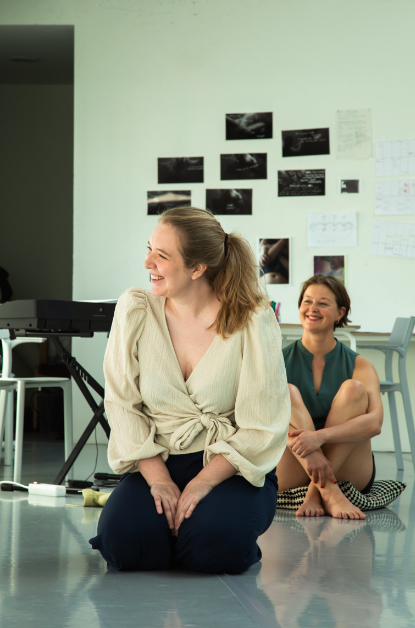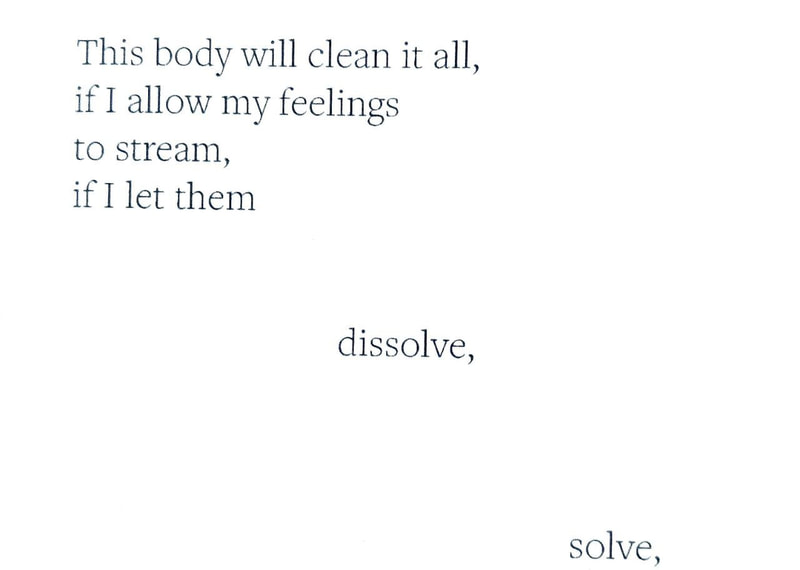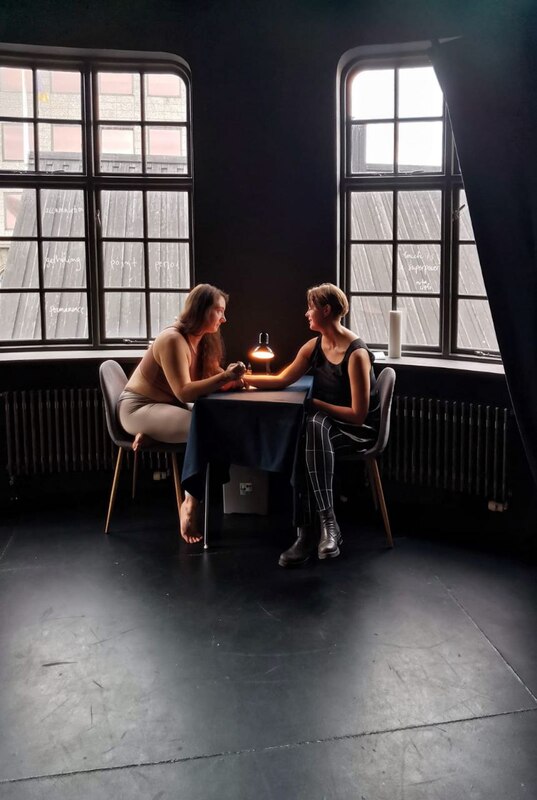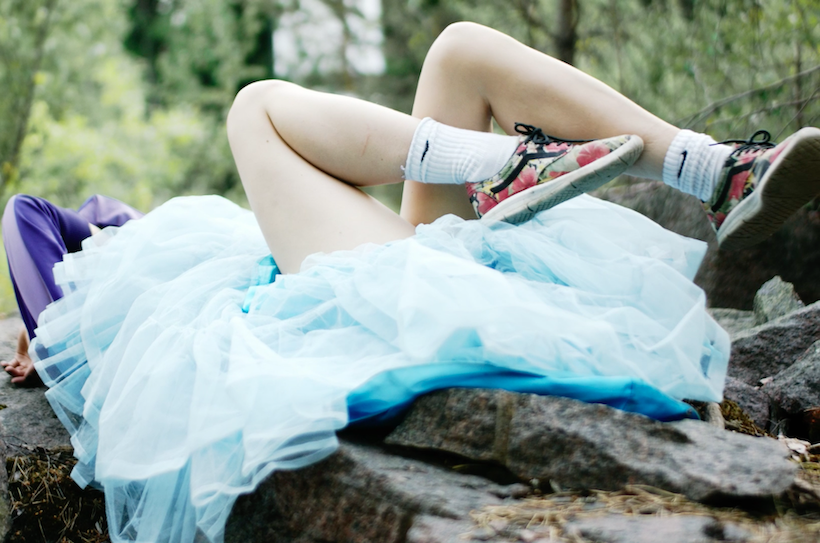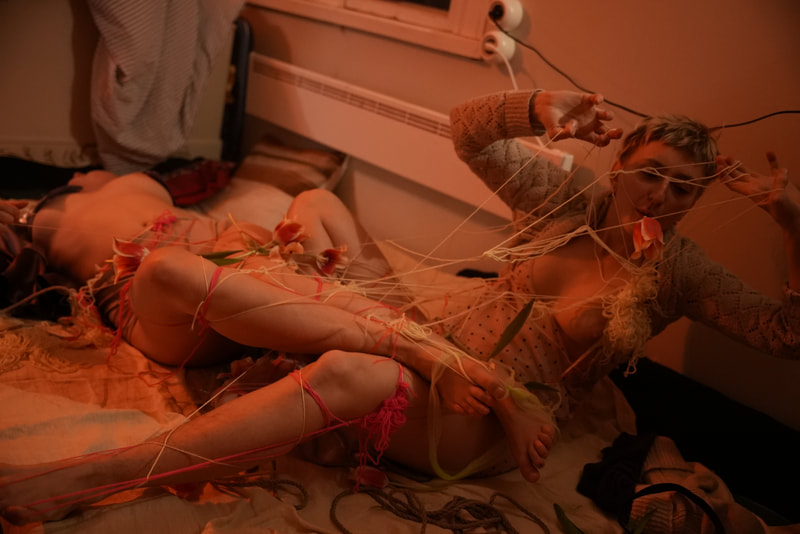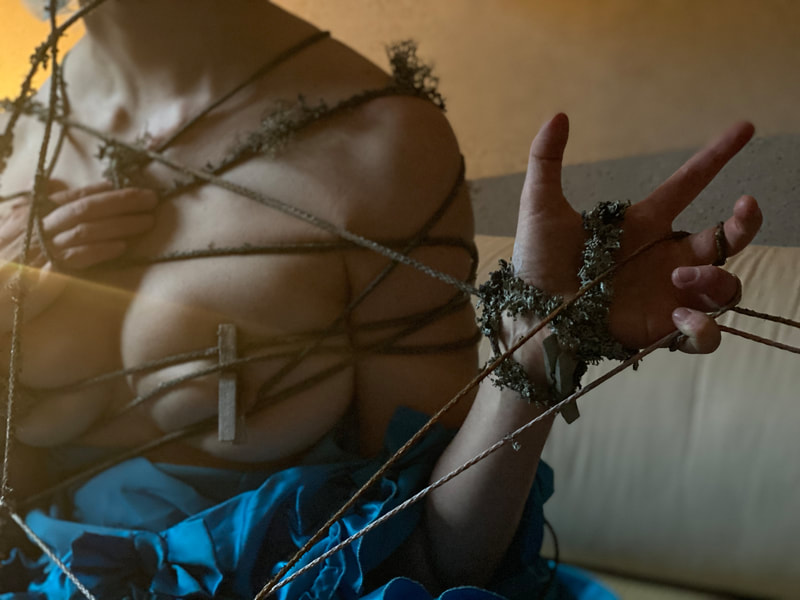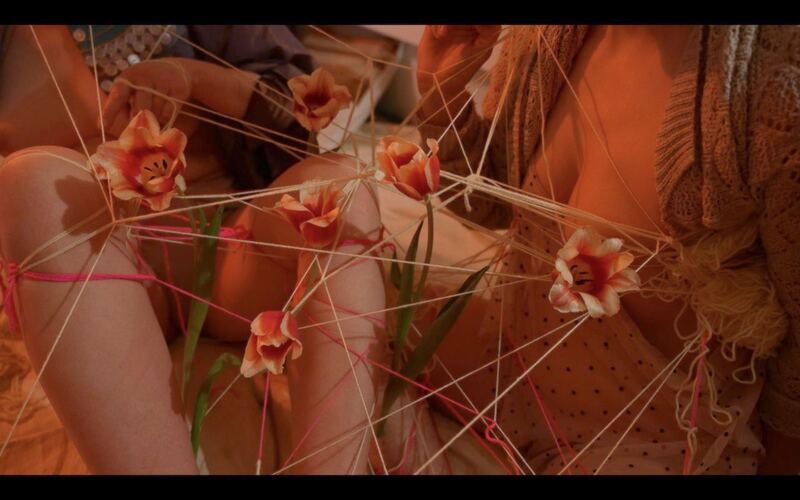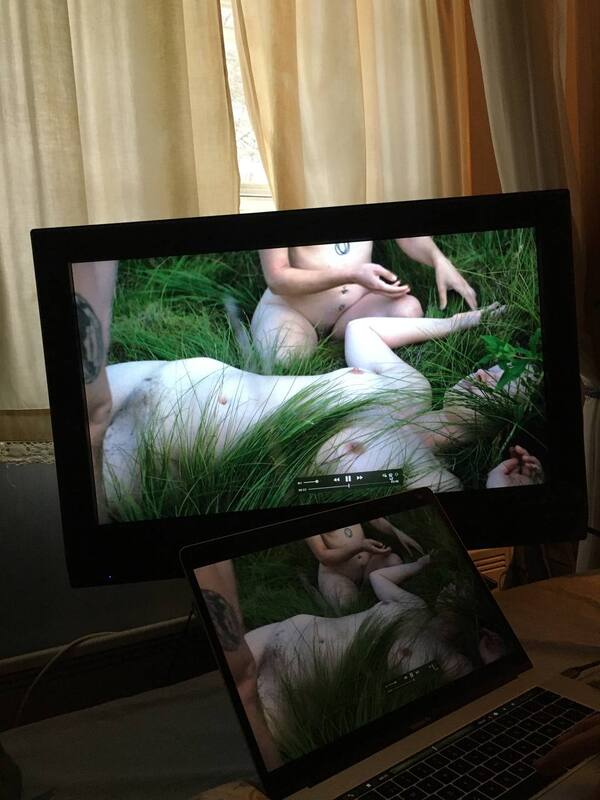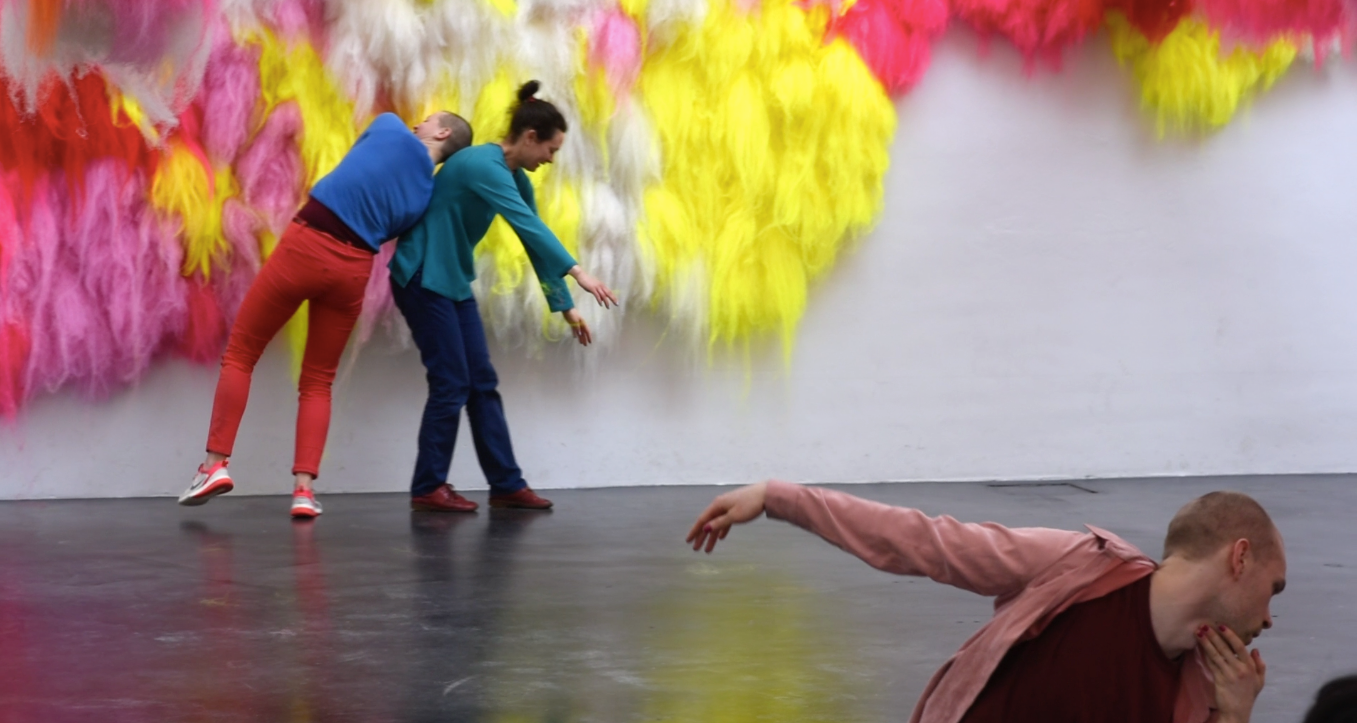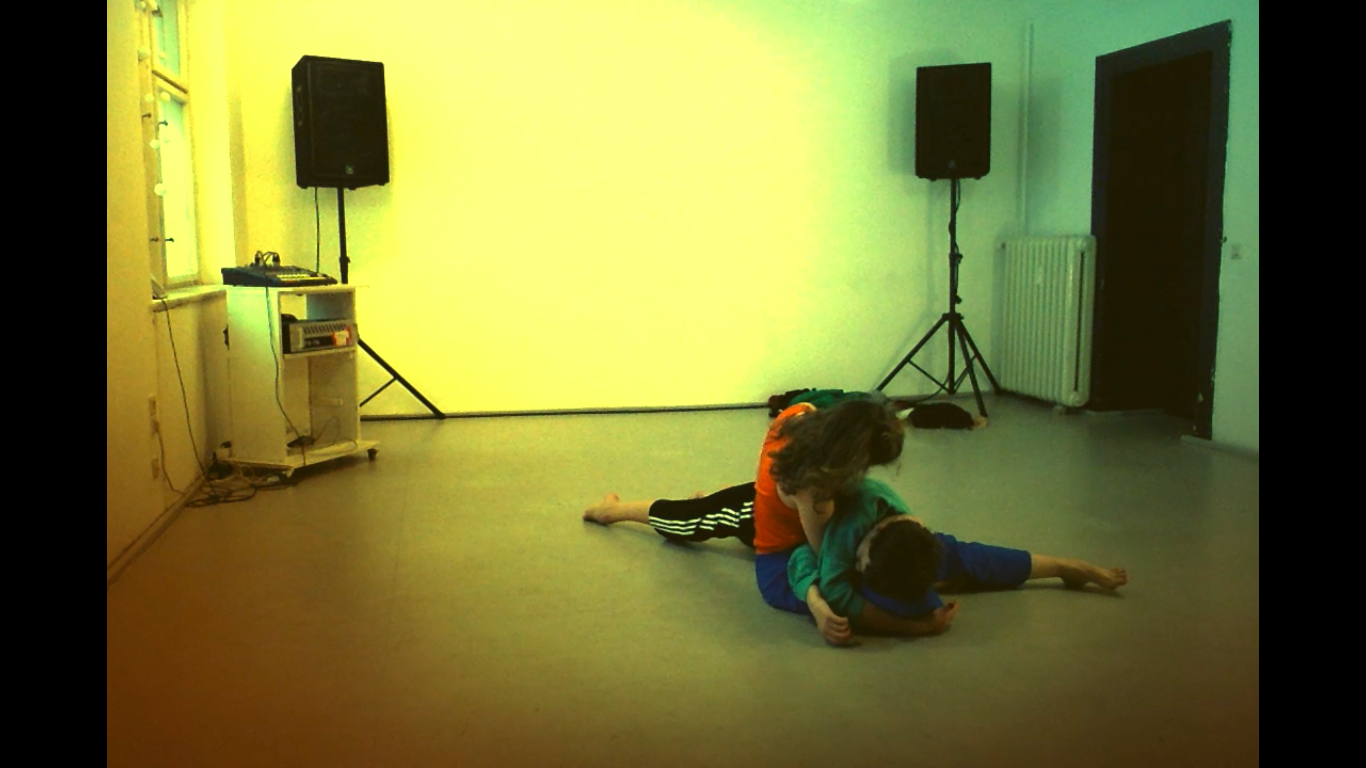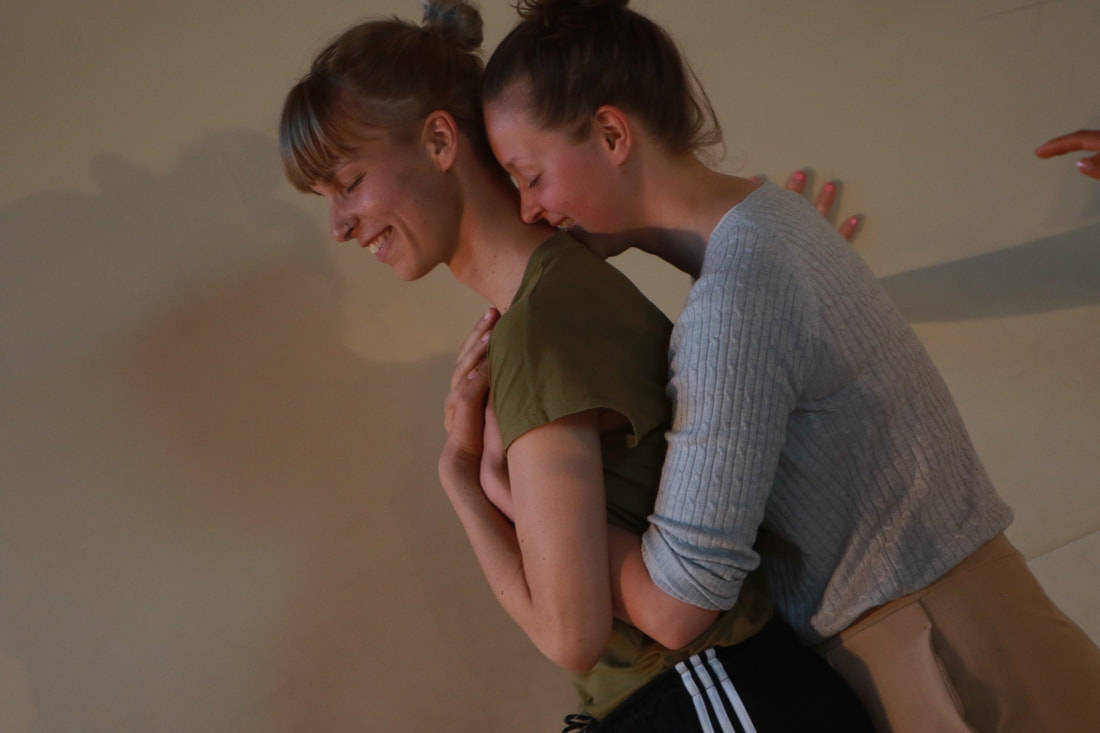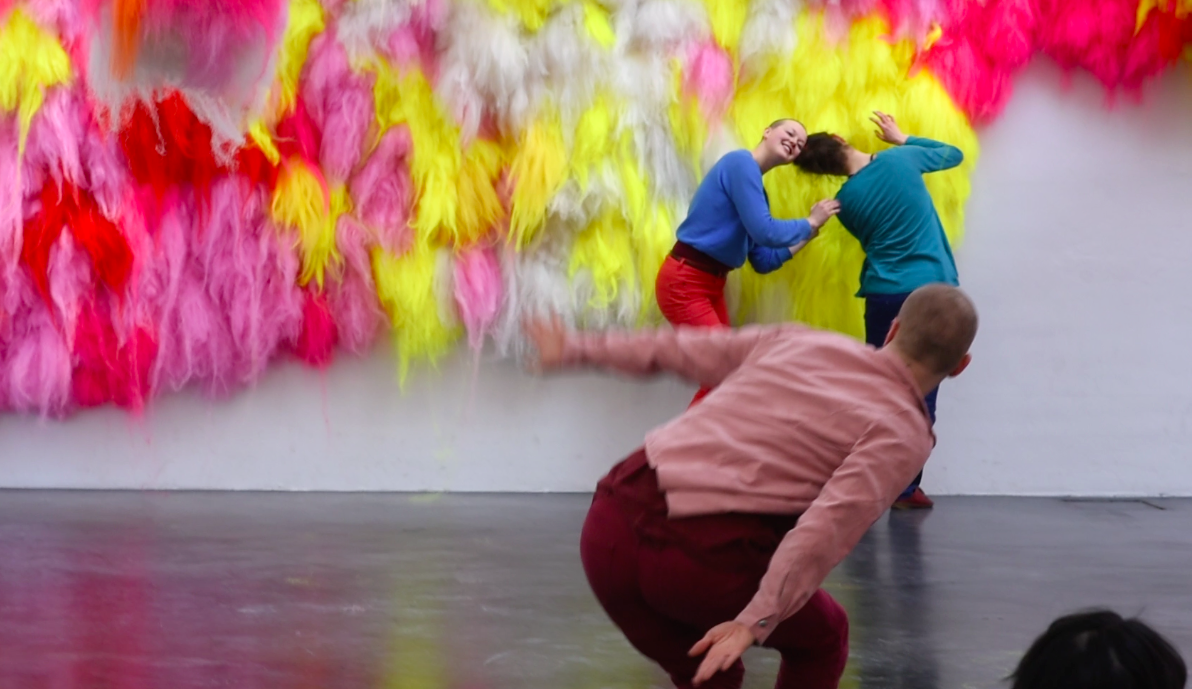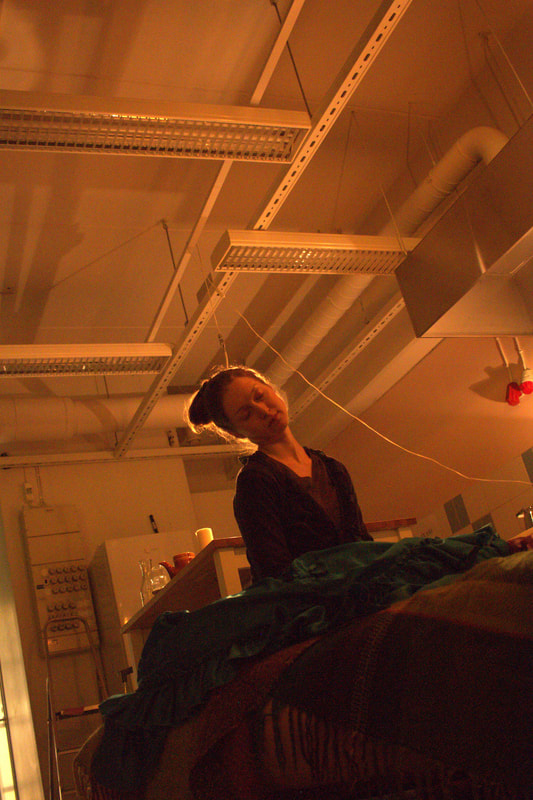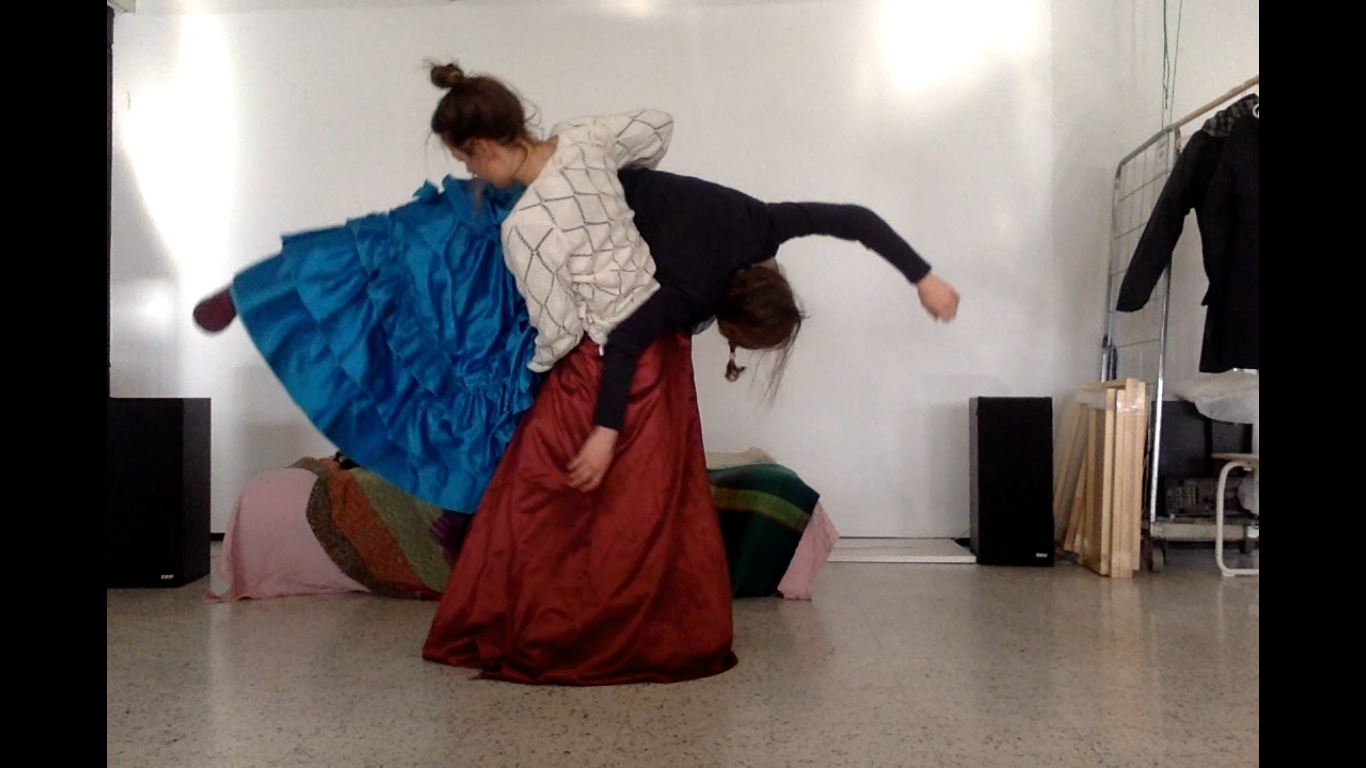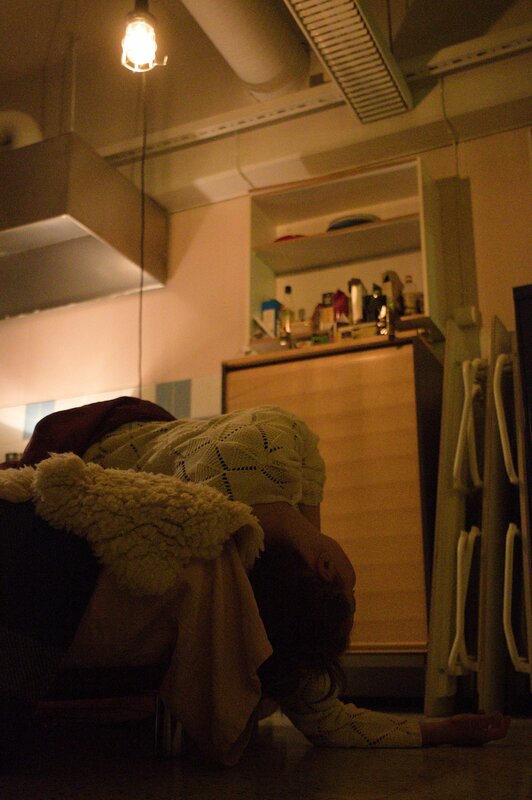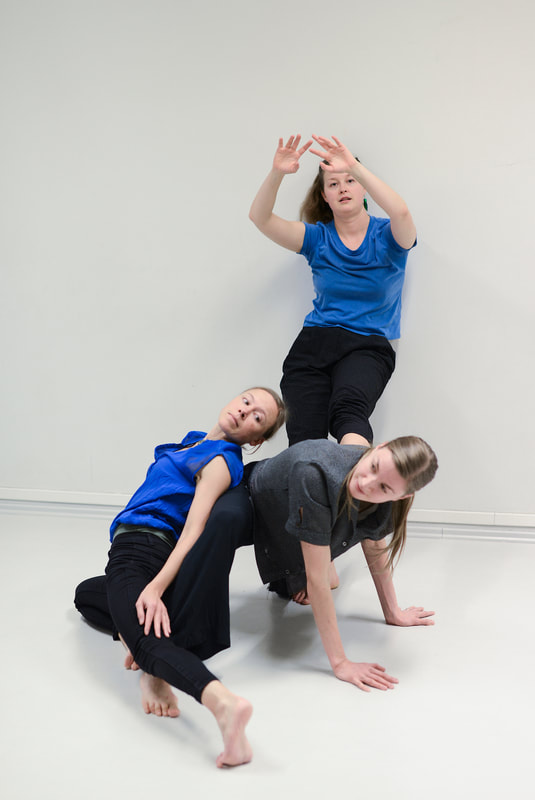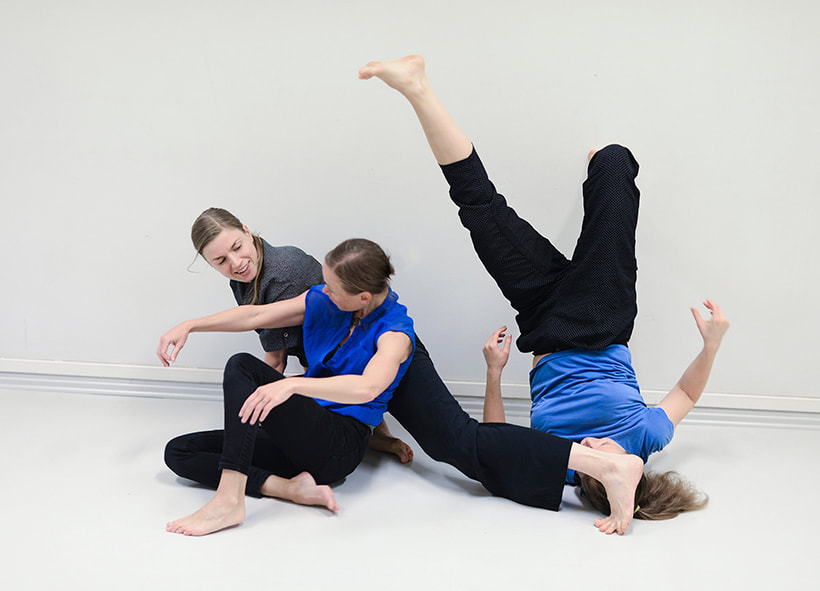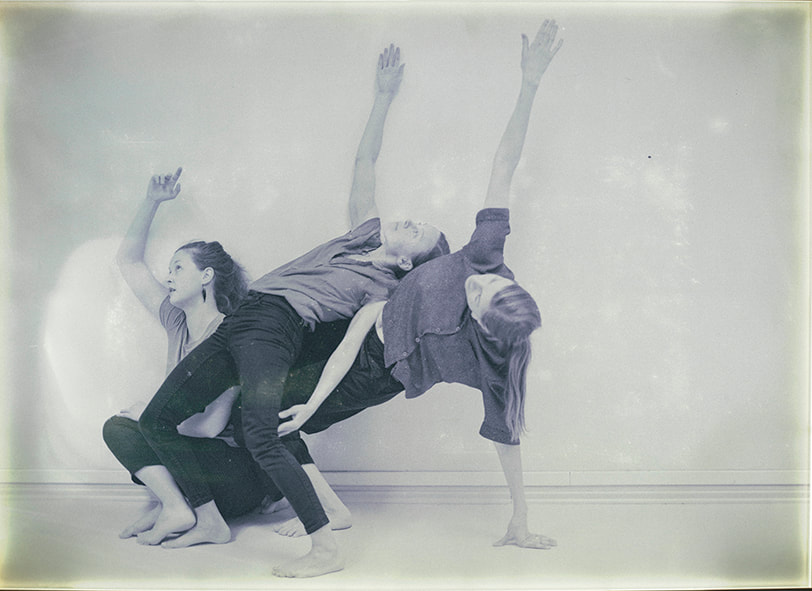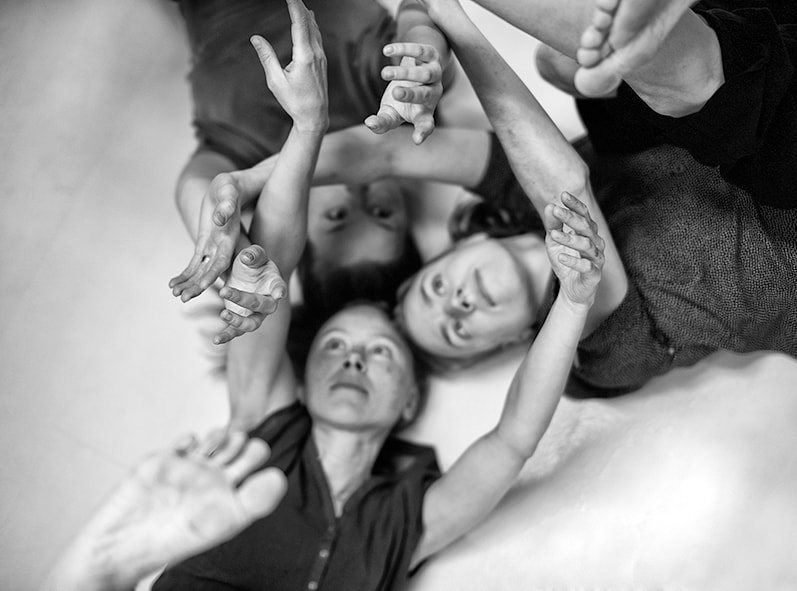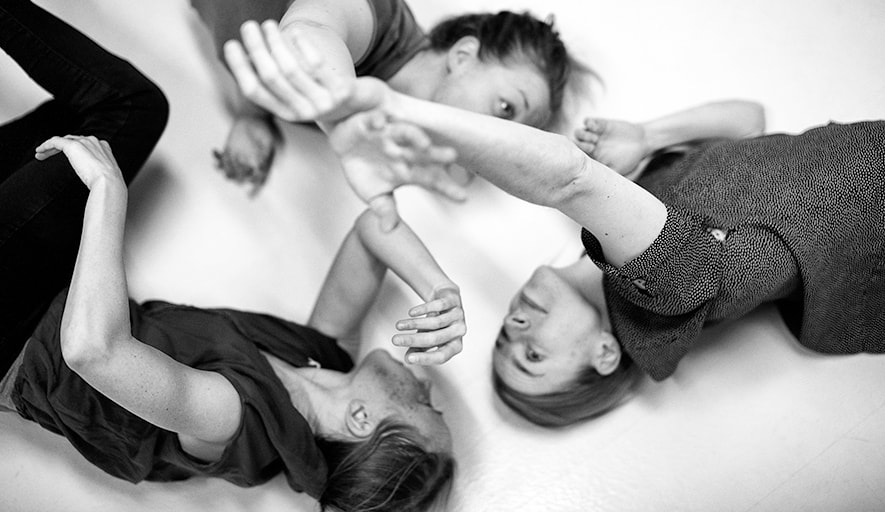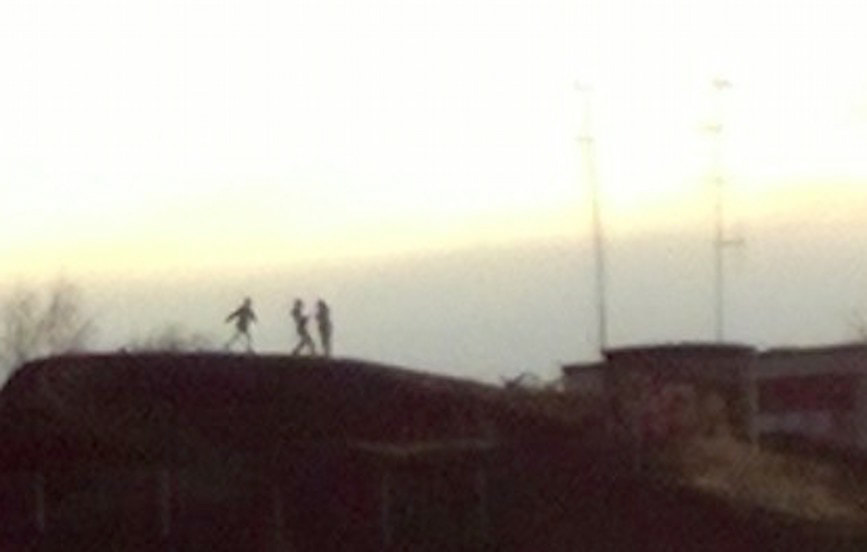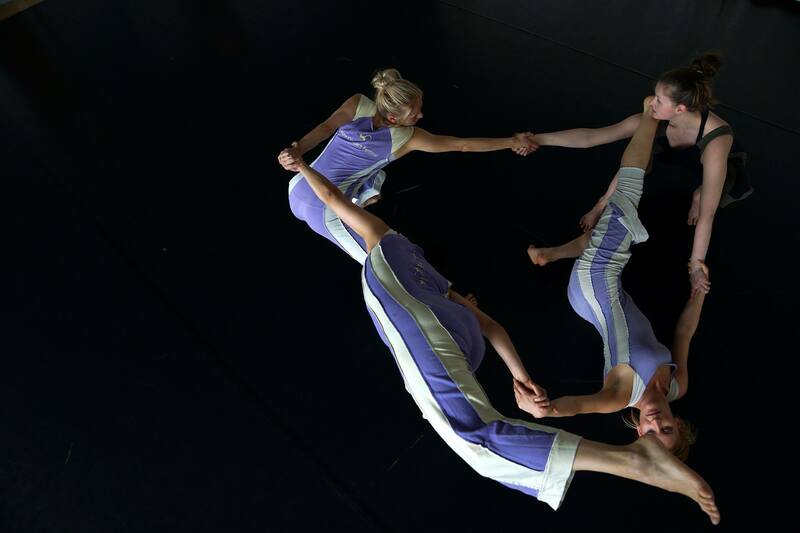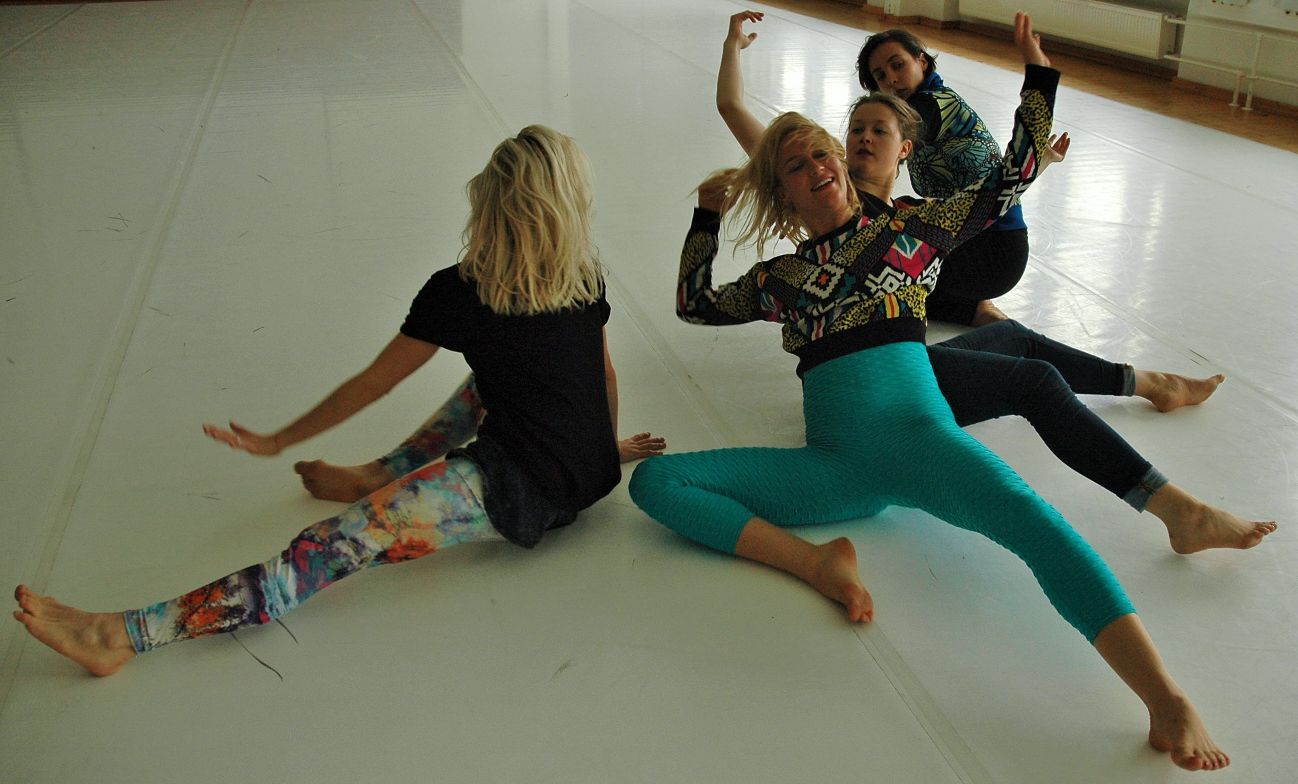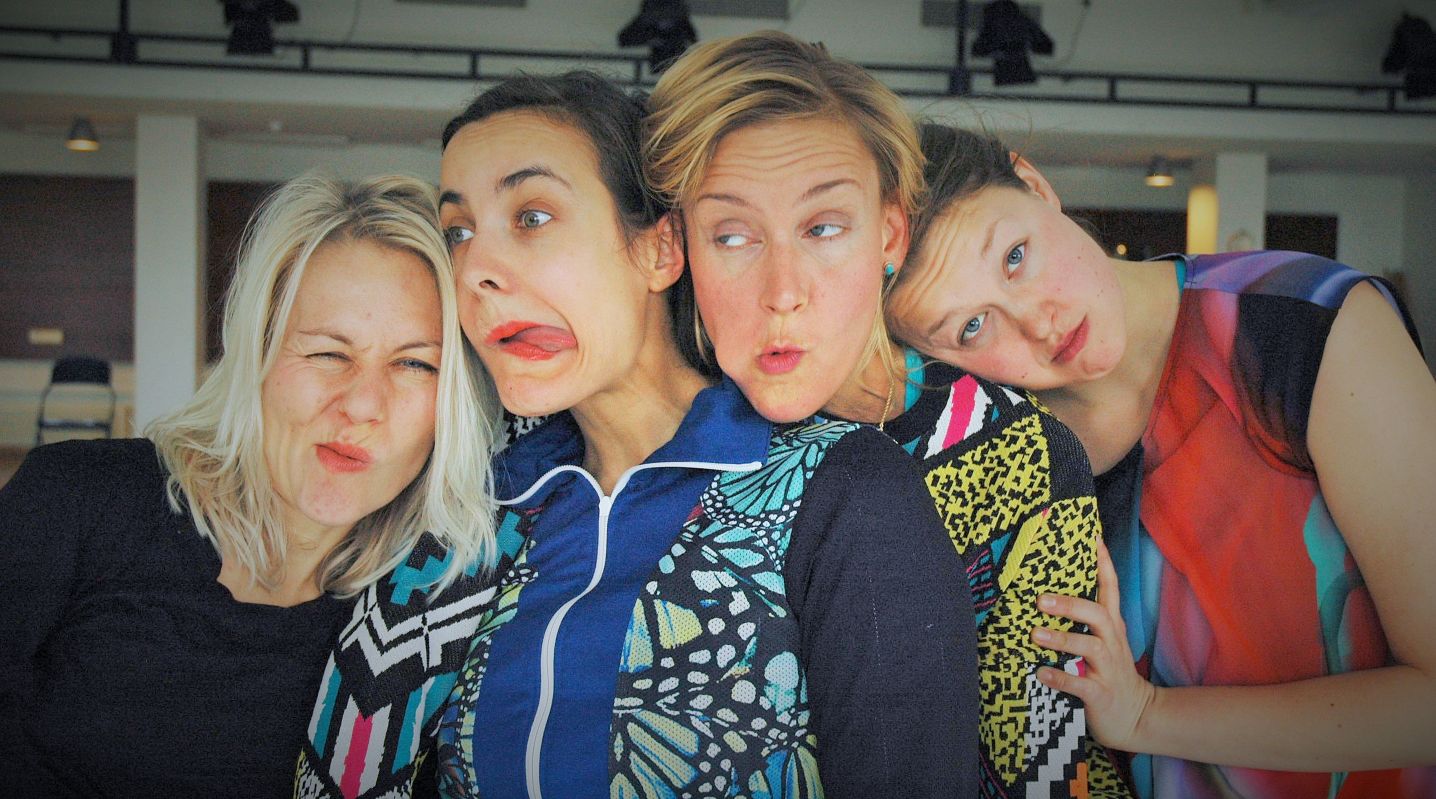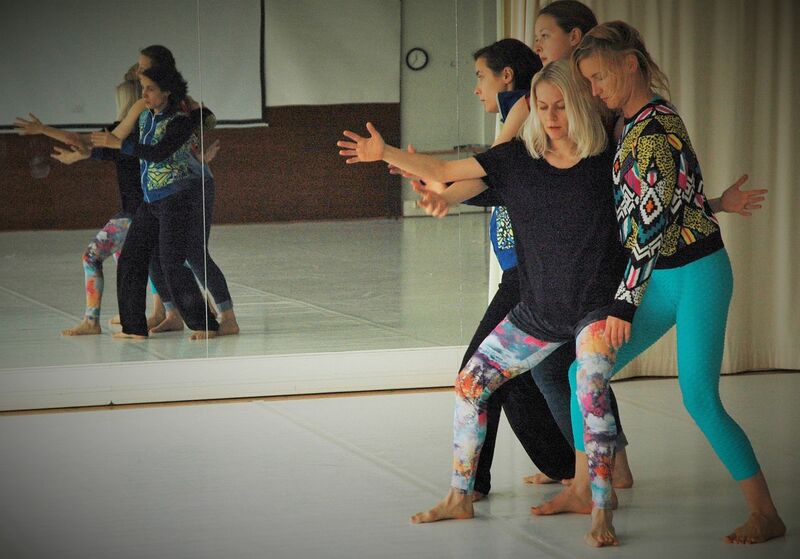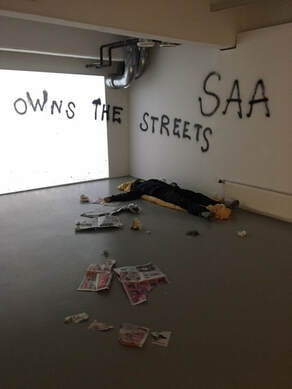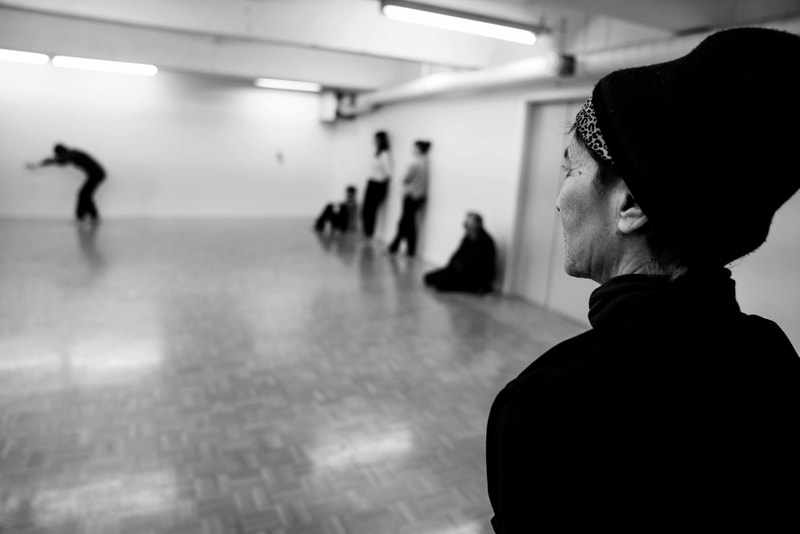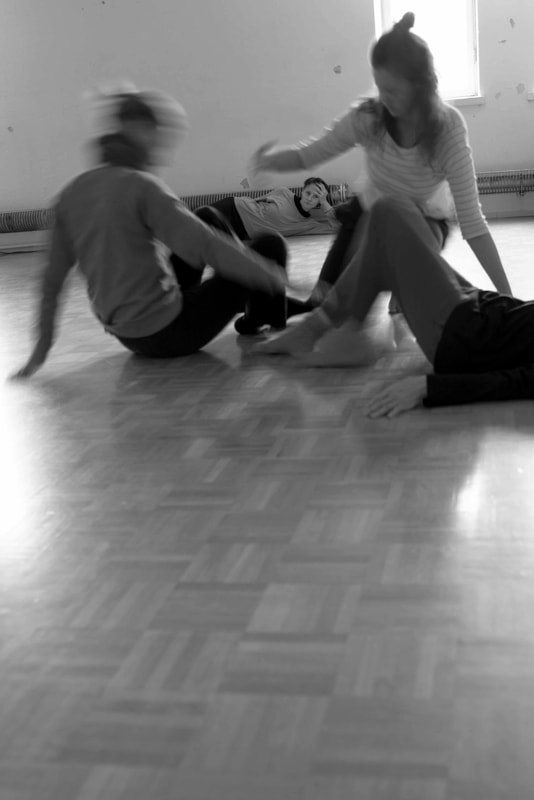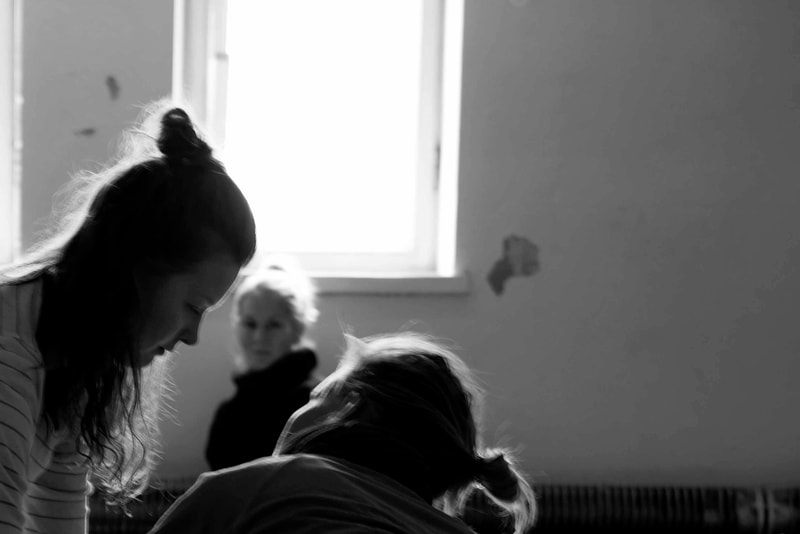Radical acceptance of self and others
Looking back I am noticing Radical Acceptance to be the essence and anchor of my work for the last 12 years.
The seed for the development of my practice came to me while I was struggling with unhealthy judgements connected with the competitiveness in the dance scene. The moment of insight came to me when I stepped out of a performance one time because I didn’t want to perform to a specific person in the audience, and I wasn’t able to rejoin the performance because I was struggling with judgements and expectations of what and how a dancer should behave.
Suddenly it was clear to me: I want to create a space where it is possible for the performer and the audience to be present and listen to what each of us needs in the moment - even if it means leaving the space entirely.
I found my first set of tools in the physical presence that helped me deal with this environment in Contact Improvisation. I learned to connect with other people while still keeping my own boundaries, fulfilling my wish to be present.
This initial idea grew into my whole life and started informing aspects of not only my performance practice but also my work as a producer/teacher (which is about creating inclusive and non-judgemental spaces) and my personal life.
Through interviews with visitors at the following performances I created, I collected evidence that this feeling of presence and freedom is clearly felt by all people that are participating, even the audience. It radiates outwards.
Touch as Content and Method
Here i write about touch and my practice with that.
Improvisation as performance
For me in the practise of improvisation the most important thing is to be present. I am sharing all that is happening and appearing in the moment with all the people in the space. I am dealing with whatever comes up, those can be emotions, sensations, pleasant or not, judgements and thoughts and I aim to make them physical while not getting overwhelmed but bringing them into movement.
The friction of future and the past create the present. In improvisation the moments are very dense and loaded because of all the things that have led to this moment, thinking for example about all the touches that have ever happened in this space.
Through the practice of improvisation as performance I am working between the heaviness and the lightness of each moment, accepting myself and others. It’s political to allow yourself to be emphatic to yourself and others.
The friction of future and the past create the present. In improvisation the moments are very dense and loaded because of all the things that have led to this moment, thinking for example about all the touches that have ever happened in this space.
Through the practice of improvisation as performance I am working between the heaviness and the lightness of each moment, accepting myself and others. It’s political to allow yourself to be emphatic to yourself and others.
Consent and Feminism
The problem of performing is that you are expected to be in a situation that can be be very vulnerable. If you consented to perform you can’t revoke your consent, you have to do it. The tools that are used to survive the moment (when I don’t feel so well to perform) are usually helping to disengage from the moment and to even dissociate.
My approach to consent and feminism is very close to improvisation - it’s about accepting what is happening in each moment and being curious about it.
I wish to be creating work situations where you are allowed to be yourself and to really be in the moment, be present with everything that you have to offer.
That’s about safer performance spaces for the performers and the audience.
My approach to consent and feminism is very close to improvisation - it’s about accepting what is happening in each moment and being curious about it.
I wish to be creating work situations where you are allowed to be yourself and to really be in the moment, be present with everything that you have to offer.
That’s about safer performance spaces for the performers and the audience.
All of this comes down to
be true to what’s in the moment.
Selected projects:
Take This Touch Inside Your Body
A performance, an exhibition, a poetry book
Essay. Touch Stays, 2022:
| Essay_touch_stays.pdf | |
| File Size: | 158 kb |
| File Type: | |
Take This Touch Inside Your Body is a collection of performative practices and poems-as-scores that explore the permanence and accumulation of touch. The event makes visible how touch, words, and sound move through our bodies and leave their traces. The audience will witness poetic actions, words in unexpected places, and reflecting on touch in their own lives.
Performed at The Iceland University of the Arts Reykjavik, 24.-27.8.2022.
Performers: Bergþóra Ægisdóttir, Katarina Huber, Kaisa Kukkonen
Still images: Dan Farberoff
Music: Olli Aarni
In intra-action, conversations, and collaborations with Katarina Huber, Dan Farberoff, Synes Elischka and Vilma Riitijoki (pupucollective), Milla Martikainen, Angela Rawlings, Mart Piirimees, Kerly Ritval, Brogan Davison, Meeri Mäkinen, Nita Little, Helga Arnalds, Amó Ólafsdóttir, Gunnella Hólmarsdóttir, Sóley Frostadottir, Vala Rúnarsdóttir, the Atlantic Ocean, whales I haven’t seen but I know exist, trauma therapy, the Contact Improvisation community, the war in Ukraine, loneliness, aloneness, lovers, the best kiss, Improv Enthusiasts, waters and pools especially at Nauthólsvík.
|
Master´s thesis for Master in Contemporary Dance Education, Hochschule Für Musik Und Darstellende Kunst Frankfurt.
Noticing Power Relations in Teaching Touch, 2021: |
| ||||||
pupu_collective
An artistic exploration on radical intimacy and queer feminist film aesthetics and production methods
In pupu_collective we work with radical intimacy in film and photo. Unfortunately, this project became so difficult for me due to personal conflicts and inability to solve them in the group that I had to take a break.
In this project I have realised that more clearly that people who have challenges with boundaries tend to work with those issues. I am not an exception. Then sometimes the only way forward is to stop and leave.
It has been a great learning process. We got personal working grants from Kone Foundation for the year 2020.
Working group: Designer and artist Vilma Riitjoki, film maker Synes Elischka, producer Svenja Fass.
In this project I have realised that more clearly that people who have challenges with boundaries tend to work with those issues. I am not an exception. Then sometimes the only way forward is to stop and leave.
It has been a great learning process. We got personal working grants from Kone Foundation for the year 2020.
Working group: Designer and artist Vilma Riitjoki, film maker Synes Elischka, producer Svenja Fass.
https://koneensaatio.fi/tarinat-ja-julkaisut/wrapping-myself-in-a-cling-film-of-methods/
Maybe I Lay on your Belly Forever
Diana Thielen, Kaisa Kukkonen
|
This work is about feminism, contact improvisation, touch, aggression, tenderness and care. We develop physical tools for finding ones agency on stage and at workshops. This work I do in collaboration with dance maker, teacher and gender studies student Diana Thielen. The scores: Let’s serve own needs, not serving the needs of the other. Let’s follow only own curiosity to fulfill own excitement and/or pleasure. Let’s aggress own decisions, not avoiding conflict, but staying within the trouble. Violence is transformation. We work on stage with the scores, changing the situation so that it always serves us and we wish the audience would do the same. In the studio we are developing questions like how to be selfish without being abusive, how to turn abusive situations to something else and what is a conflict in a physical interaction. How do we relate to each other? We reflect our behavior on stage and in everyday life through scores, questions and feminist approach. How do we embody our gender and is it possible to queer it through physical interaction? We are working with texts by Hannah Arendt, Donna Haraway, Erin Manning, Sarah Ahmed and Iris Marion Young and aim to queer the audience vision of two female-bodied persons in contact on stage. One feedback we got was that our performance is very queer without looking like one. The performances have been 15-20 minutes long pieces where we move in space. We have kept the scores (the ones mentioned above) as a secret to the audience. The latest one (video) was in a residency with Shake it Collaborations and Tove Sahlin at Skeppsholmstudion in Stockholm in March 2019. We worked with a musician Josefin Runsteen. We used different strategies to involve the audience: giving them papers and pens to write, ask them to read out loud and giving them little exercises, at the performance at DansPlats Skog we talked about the performance in-between the two rounds of dancing. Next version happened in Museum of Contemporary Art Kiasma in Helsinki on the 12.4.2019 with 7 dancers and a harpist. There we perform dance duets in installation-like setting, the performers have conversations with the audience. Full footage, filmed by Tully Doole: |
Princensesses (of prisons, senses and princesses)
Our journey started from a Somatic Bootcamp. We met for the Contemplative Movement Practice (originally developed by Barbara Dilly) over a period of time in the beginning of year 2018. Contemplative Movement practice is a practice of non-definable movement, altered logic and meaning. It’s a score of 30 minutes sitting meditation, 30 minutes of movement for oneself and 30 minutes dancing together.
In front of an audience, the interest shifts into the play that messes with a direct interpretation and presumptions of aesthetics and looks. In the context of this performance, we are exploring how to stretch beyond the generic conclusions of how and under which circumstances one is allowed to sense and ambivalent aspects of how sensing is performed. We wish to challenge an idea that sense-practices are directly linked to a liberation of the self.
This performance was a very challenging situation for me as I was feeling very vulnerable because of something that had happened in my personal life. I decided still to go through the performance and see what happens, when I bring this vulnerability on stage. The work is about being with what is and it was very interesting to see how me and Gesa Piper dealt with that situation so differently. I was moving very little, going towards very small movements on my fingers and face and Gesa was moving around, talking, trying to make me move, using the space and going into a character. Out setting was very free, we had timing for the beginning meditation where we looked at each other to the eyes and after that we did 20 minutes of practice.
At the Museum of Impossible Forms (Mif) we performed at a evening called the Fierce Urgency of Now on the 9th of March 2018.
Full footage, filmed by Synes Elischka
